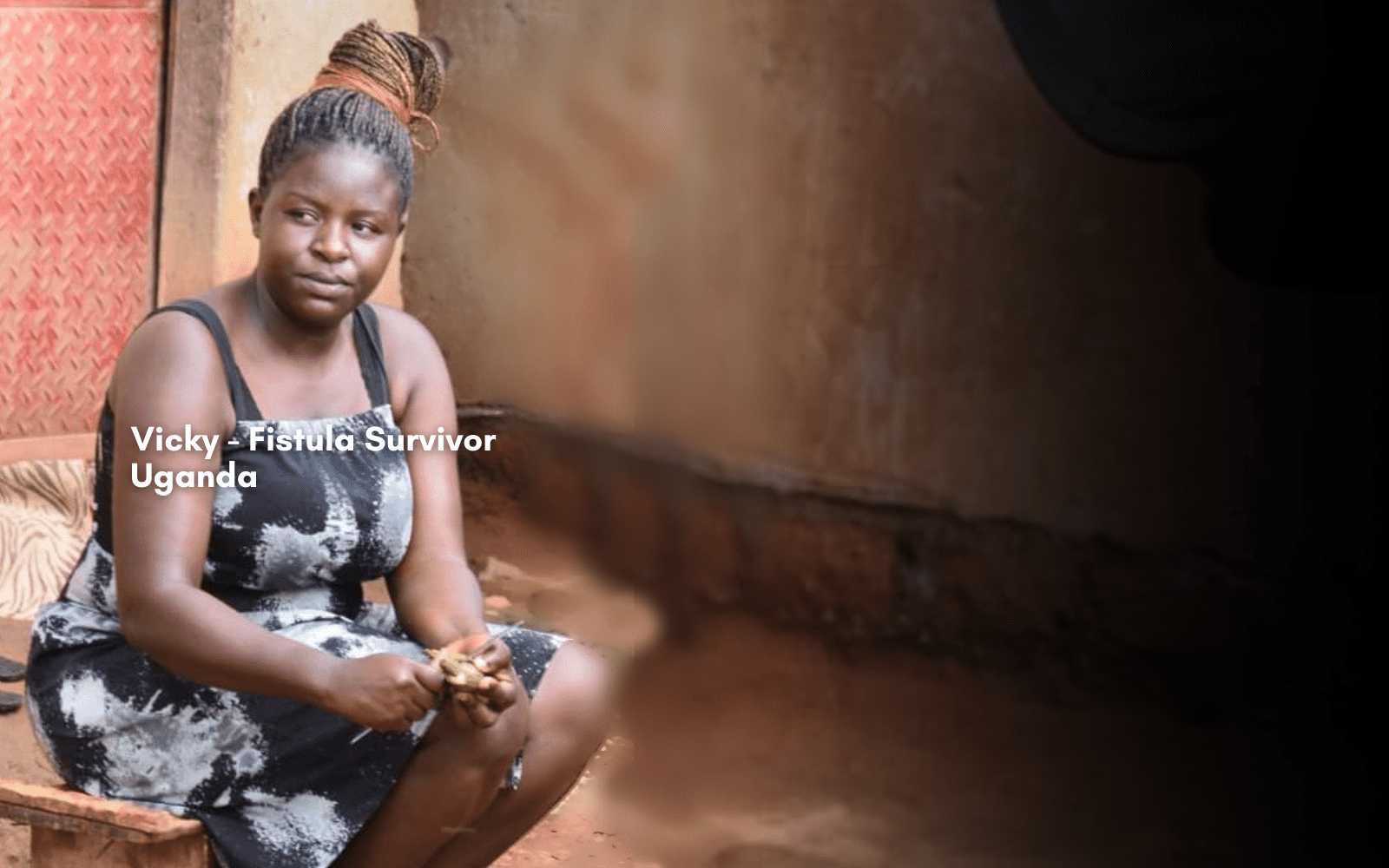The book of Genesis famously declares that “in sorrow” women shall bring forth children. This is still a sadly accurate characterization of many women’s childbirth experiences, particularly in poor countries. Each year over half a million young girls and women die giving birth, but only 1 percent of these deaths occur among the world’s affluent populations. For each one who dies, several dozen more will sustain life-altering injuries from labor and delivery. This ongoing obstetrical carnage goes largely unnoticed in the West.
Among the worst complications a woman can develop is obstructed labor, where her baby will not fit through her birth canal. Obstructed labor is an obstetrical impasse. The irresistible force of the uterine contractions trying to push the baby out confronts the mother’s unyielding bony pelvis, which will not permit the process to go forward. As labor continues, the baby is forced deeper into the pelvis, where it becomes tightly wedged against the soft tissues of its mother’s bladder and vagina, compressing them against her pelvic bones.

In the West we solve this problem by cesarean delivery, making a new passageway for delivery through an incision in the abdomen and uterus, thereby bypassing the obstruction. In most parts of sub-Saharan Africa, however, lifesaving obstetric services of this kind are almost nonexistent (the C-section rate in West Africa is 1.3 percent, in the United States nearly 30 percent), and so the poor mother and her child remain suspended in agony, desperately waiting for a deliverance that never comes, until the relentless, crushing pressure of labor asphyxiates the child.
The death of her unborn child will not end this woman’s sorrow, however. Her womb will continue to attempt to expel the body of the now lifeless child. In a day or so, as the fetus starts to decay, it will eventually soften enough so that it can slide past the obstruction in its mother’s pelvis. Exhausted after three or four days of continuous labor — sometimes longer — she will deliver her stillborn child, but rather than finding blessed relief, too often she finds instead that her ordeal is only just beginning.
If she does not die from hemorrhage or infection or from physical exhaustion, the girl or woman who survives obstructed labor may soon discover that she has no urinary control. The prolonged pressure of the baby’s head prevents her from urinating during labor. The agony of three or four days of urinary retention is added to the agony of a labor that will not end, and all the while her painfully distended bladder is being crushed by the fetal skull pressed against it. Eventually the entrapped tissues lose their blood supply and, starved of oxygen like the dying fetus, they also die, leaving behind a fistula.
A fistula is a hole between the bladder and the vagina. Once a bladder has a fistula it can no longer store urine. Every drop of urine produced by the kidneys and carried down to the bladder simply runs out through this hole. The woman with a fistula is incontinent day and night. As soon as the urine reaches her bladder, it runs out through her vagina, down her legs, and onto the floor. No matter how hard she tries, she can never stay clean. Before long the skin on her bottom breaks down, encrusted in urine salts and infected. In many cases the injury involves the rectum, leading to a constant loss of feces. The most unfortunate of all have an injury to both the bladder and the rectum, resulting in continuous urinary and fecal incontinence. The constant smell of waste surrounds her, driving her friends away. She is unattractive to her husband and a burden to her family who are faced with the difficult practical question of how to deal with this hideous problem.
Because these injuries will not heal without surgery— and because lack of access to surgical services (cesarean section) is one of the main reasons the problem developed in the first place — no good solutions are readily available. The family often resolves the problem by sending her away to fend for herself as best she can. Perhaps they confine her to a small hut on the edge of the family property, where she sits day after day, stinking, alone and shunned by her community, friendless and outcast, living in sorrow. Many of these girls are only 13 or 14 years of age, old enough to become pregnant but not physically mature enough to deliver a child safely. For all practical purposes their lives are over while they are still children themselves.
This problem is deeply embedded within the socioeconomic matrix of the countries in which fistulas are prevalent, but the women themselves are blameless. Their suffering is not due to personal misbehavior or a “bad choice,” rather it is simply the result of reproductive misadventure, the misfortune of having been born female in a society where women are not valued equally with men, and living in situations where they have little or no control over the circumstances in which they become pregnant. Several million women live with obstetric fistulas in Africa and South Asia today, and tens of thousands of new cases occur every year. Since fistulas are not by themselves fatal, a woman may live for decades once she has been injured in this way. The cumulative human suffering that this entails is almost incalculable.
These circumstances bring to mind the passage in the gospel of Mark that tells how Jesus healed a woman with a chronic menstrual discharge. She crept up behind him in a crowd, touched his cloak, and was healed. All careful readers of the New Testament are familiar with this passage, since it is found not only in Mark but also in Matthew (9:20-23) and Luke (8:43-48). Unfortunately, the depths of meaning found in this passage are rarely explored. While this woman’s chronic menstrual bleeding was certainly unpleasant, its true importance lies in the fact that she was infertile. Regular cyclic menstrual bleeding is the outward sign of ovulation, a prerequisite for conception. Since Mark tells us that her discharge of blood has lasted for 12 years, we can be assured that she hasn’t been pregnant during this time. Something was wrong with her ability to conceive, and it is this that is the cause of her anguish and distress.
Women in the biblical world were expected to be wives and mothers. Motherhood was their “reason for being,” the role that gave purpose to their lives. This woman’s burden was not simply that she had irregular menstruation; rather, she was cut off from the one thing that gave her meaningful status in society. The reason that she had “endured much under many physicians and had spent all that she had” was not that she had heavy and prolonged menstrual periods; rather, she was desperate because she could not have a child. Given the society in which she lived, infertility would have been cause for outright panic. Without any children, a woman would be looking into the abyss of a sorrowful, lonely, and meaningless future.
The second devastating consequence of this woman’s condition was that she was always ritually unclean. The book of Leviticus (15:19-24) describes the ritual status of menstruating women in detail and the requirements they had to meet in order to return to purity. To be sure, many—perhaps most—women accepted the laws of ritual purity laid down in the Torah, abided by them scrupulously, and found fulfillment in living righteous and properly regulated religious lives.
But when menstrual bleeding became irregular and unpredictable, these purity restrictions became progressively more constrictive and burdensome. To have had nearly constant menstrual bleeding for 12 years in a society where rules of purity were rigorously enforced would have been truly awful. Such a woman would be constantly unclean. Those who knew about her condition would not welcome her. She could not participate in religious services or religious activities. An accident of menstrual hygiene would disrupt her household, at great inconvenience to those living with her. The collective burden of 12 years of such uncleanness would have become overwhelming, and the woman of Mark 5 must have wondered why such a thing had happened to her. How could she get pregnant anyway? If her husband had been a righteous man, he would not have come near her due to her constant impurity—so the likelihood of being permanently childless would have been almost certain.
These are the reasons the woman in the crowd was so desperate to find Jesus. It also explains why she didn’t explain her problem to him face-to-face and ask him for his healing touch. Such an action would have been both embarrassing and ritually dangerous. How much simpler just to sneak up and grab hold of his clothes for a moment, making off with just enough of his holy healing power to cure her ailment.
The woman is successful. She manages to touch Jesus, and her affliction is cured. But imagine her horror when, having stealthily accomplished her task and melted back into the crowd, Jesus suddenly turns around and asks, “Who touched me?” The reason Mark says “she came in fear and trembling” was that she had just done an unconscionable thing. She had willfully approached a holy person, in the full flood of her impurity, thereby rendering him unclean as well. To be exposed in public in the midst of this shameful and ritually defiling act would have been dreadful in the extreme.
But Jesus overturned the expectations produced by her shocking act. Instead of castigating her and humiliating her in public, Jesus looked her in the eyes. He probably smiled at her. You can even imagine him touching her himself, for physically taking hold of her in these circumstances would have been typical of Jesus, deliberately violating a ritual restriction in order to perform an act of healing and compassion.
“Daughter,” he said to her, using a term of kinship that indicates a familial relationship even though he cannot have been much older than she was herself—“your faith has made you well; go in peace, and be healed of your disease.” At this sudden reversal of expectations, this restoration and healing, the kingdom of heaven broke forth into the life of this suffering woman. It is a magnificent moment, worthy of wonderment and celebration.
The nameless, unclean woman in the crowd was not a sinner cursed by God because of some moral error on her part. Neither was she particularly unfortunate just because her life was governed by Jewish ritual law. All societies make distinctions between the “clean” and the “unclean” (the acceptable and the unacceptable), and physical/mental disorders of various kinds often form the basis for such distinctions. The woman in Mark’s gospel is merely an innocent victim of disordered physiology, as are the millions of women in Africa today who are shunned by their communities because they have a fistula.
They, too, are victims of disordered reproductive physiology, but their shame is deeper, their suffering is more intense, and their need for healing is greater than that of the unclean woman who touched Jesus’ cloak. These women also try to hide themselves in the crowd, but unlike the bleeding woman, their stigma is obvious to all those around them. The woman in Mark’s gospel could hide her menstrual shame with a discrete padding of cloth, but a woman with a fistula cannot manage in this way. The constant trickle of urine rapidly saturates whatever absorbent material she can stuff between her thighs, and the odor arising from these urine-soaked rags is both omnipresent and unmistakable to those around her. It is not possible to hide in a crowd; the only option is to flee from the crowd, to live in misery on the margins of society.
In spite of these devastating circumstances, many of these women show remarkable and deeply inspiring resilience in the face of their suffering. Moreover, fistulas can generally be cured and the lives of these women restored with low-technology surgical care. There is no more gratifying surgical operation than successful treatment of an obstetric fistula: At one stroke a human life is transfigured, an outcast is restored to social community, and a broken life is made whole again. Two years ago in Liberia, Dr. Steve Arrowsmith and I operated on a 67-year-old woman who had developed a fistula during her third pregnancy, at age 32. She had lived with constant urinary leakage for 35 years, and yet when we examined her under anesthesia, we found her injury to be small. It took less than 30 minutes to repair.
To be sure, not all fistulas are this simple. Many of these birth-induced injuries are breathtaking in their extent and complexity, requiring multiple operations and perseverance on the part of both the surgeon and the patient. What is abundantly clear, however, is that the very existence of this problem is a remediable injustice that demands action.
The need is enormous to expand the capacity to treat these injuries throughout Africa. The Worldwide Fistula Fund is developing a model fistula surgery and training center in Danja, Niger, in partnership with other mission organizations. Similar centers based on this model can and should be replicated elsewhere using a network of existing mission hospitals in countries where the fistula problem is endemic. These women have been waiting patiently for years. What are we waiting for?
L. Lewis Wall is professor of obstetrics and gynecology in the School of Medicine, and professor of anthropology in the College of Arts and Sciences, at Washington University in St. Louis, Mo. He is the president of the Worldwide Fistula Fund, a nonprofit dedicated to promoting excellent, ethical, comprehensive care for women with obstetric fistulas by supporting direct provision of clinical services to birth-injured women, training surgeons in fistula surgery, advocating for the unmet needs of these outcast women, and encouraging scientific research in fistula treatment and prevention.


